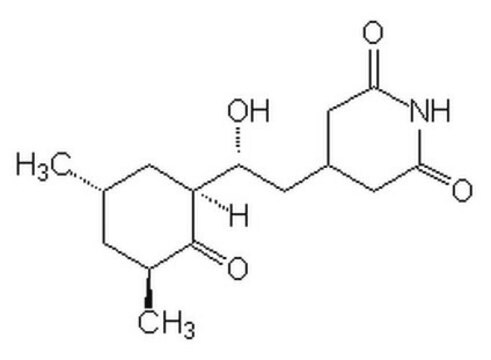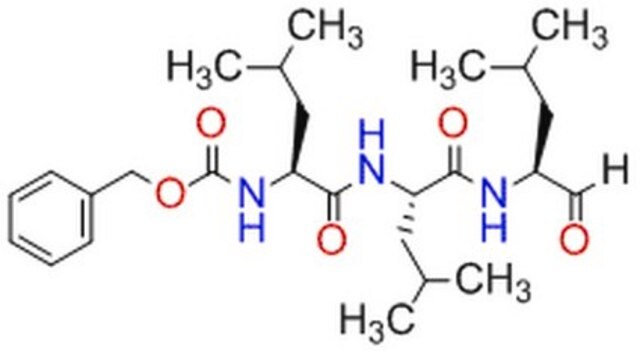239765
Cycloheximide
InSolution, 100 mg/mL in DMSO, Suitable for cell culture
Synonym(s):
InSolution Cycloheximide
About This Item
Recommended Products
Quality Level
form
solution
manufacturer/tradename
Calbiochem®
concentration
100 mg/mL in DMSO
solubility
DMSO: soluble
storage temp.
2-8°C
InChI
1S/C15H23NO4/c1-8-3-9(2)15(20)11(4-8)12(17)5-10-6-13(18)16-14(19)7-10/h8-12,17H,3-7H2,1-2H3,(H,16,18,19)/t8-,9-,11-,12+/m0/s1
InChI key
YPHMISFOHDHNIV-FSZOTQKASA-N
General description
Biochem/physiol Actions
hFKBP12
Packaging
Warning
Physical form
Reconstitution
Other Notes
Lu, Q. and Mellgreen,R.L. 1996. Arch. Biochem. Biophys.334, 175.
Chow, S.C., et al. 1995. Exp. Cell Res.216, 149.
Waring, P. 1990. J. Biol. Chem.265, 14476.
Obrig, T.G., et al. 1971. J. Biol. Chem.246, 174.
Pestka, S. 1971. Annu. Rev. Microbiol.25, 487.
Legal Information
Signal Word
Danger
Hazard Statements
Precautionary Statements
Hazard Classifications
Acute Tox. 3 Oral - Aquatic Chronic 3 - Muta. 2 - Repr. 1B
Storage Class Code
6.1C - Combustible acute toxic Cat.3 / toxic compounds or compounds which causing chronic effects
WGK
WGK 3
Regulatory Listings
Regulatory Listings are mainly provided for chemical products. Only limited information can be provided here for non-chemical products. No entry means none of the components are listed. It is the user’s obligation to ensure the safe and legal use of the product.
PDSCL
Deleterious substance
ISHL Indicated Name
Substances Subject to be Indicated Names
ISHL Notified Names
Substances Subject to be Notified Names
JAN Code
239765-1ML:4548173377360
Certificates of Analysis (COA)
Search for Certificates of Analysis (COA) by entering the products Lot/Batch Number. Lot and Batch Numbers can be found on a product’s label following the words ‘Lot’ or ‘Batch’.
Already Own This Product?
Find documentation for the products that you have recently purchased in the Document Library.
Customers Also Viewed
Our team of scientists has experience in all areas of research including Life Science, Material Science, Chemical Synthesis, Chromatography, Analytical and many others.
Contact Technical Service









